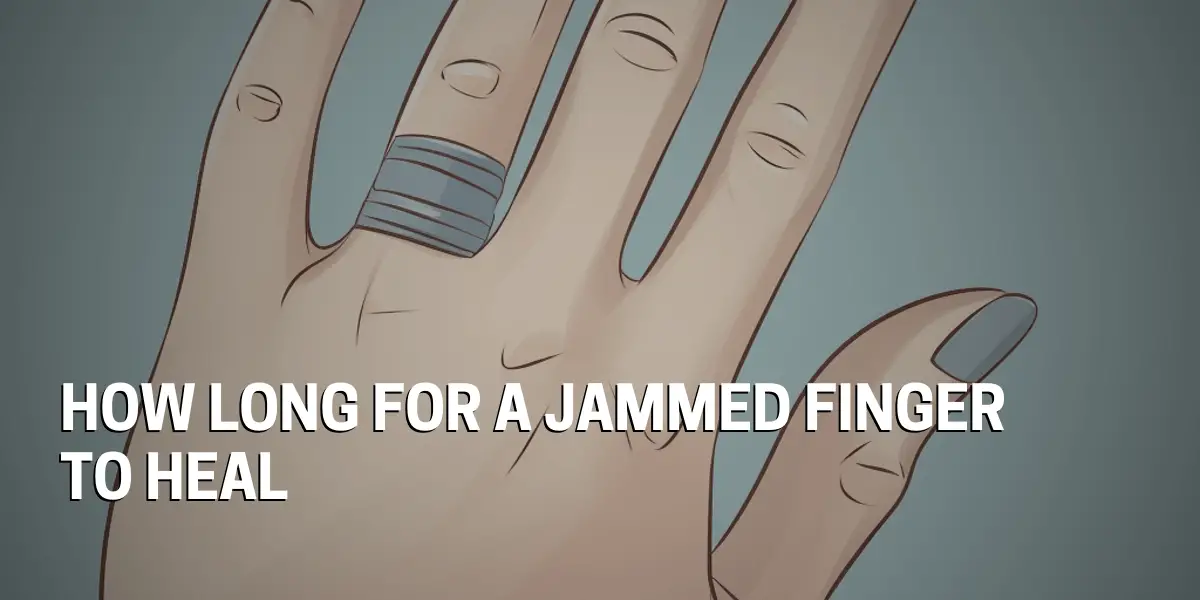How Long Does It Take For A Jammed Finger To Heal?
When a person suffers a jammed finger, the healing process can take anywhere from a few days to several weeks, depending on the severity of the injury. In order to determine how long the healing process will take, it is important to consider a few key factors that impact the recovery time.
The severity of the injury is the most important factor when it comes to determining the length of the healing process. Minor jammed fingers may only take a few days to heal, whereas more severe injuries may take up to several weeks. Additionally, the age of the person can also play a role in the healing process, as younger people tend to have faster healing times.
In addition to the severity and age of the person, there are also certain factors that can impact the healing process. For example, if the person is not getting enough rest or is engaging in activities that put strain on the finger, the healing process may be delayed. Other factors that can affect the healing process include nutrition, hydration, and stress levels.
Fortunately, there are a number of treatment options available to help speed up the healing process. Resting the finger and applying cold compresses or ice packs can help reduce swelling and reduce pain. Additionally, taking over the counter painkillers and using a brace or splint can also help reduce pain and inflammation.
Common Symptoms of a Jammed Finger
When a person suffers a jammed finger, it is important to recognize the common symptoms to ensure proper treatment. How a jammed finger presents itself can vary depending on the severity of the injury, but some of the most common symptoms include pain, swelling, limited range of motion, bruising, and numbness. These symptoms may be immediate or may take a few hours to appear, and some people may even experience a clicking or grinding sensation when they move the finger.
In some cases, a jammed finger may also require the use of a splint or brace to protect it from further injury.

Preventative Measures for Jamming a Finger
Jammed fingers are a type of injury that can cause pain and swelling, as well as a limited range of motion. Taking preventative measures is the best way to reduce the risk of finger jamming and the associated healing time.
Wearing protective gear such as gloves and wrist guards can help protect the fingers from potential harm. Additionally, stretching and warming up the muscles before engaging in any activities that may cause finger jamming can help reduce the risk of injury.
Treatment Options for Jammed Fingers
Finger jamming is an injury that can cause swelling, pain, and limited range of motion. It is important to take preventative measures to reduce the risk of finger jamming and the associated healing time. Rest, ice, compression, and elevation (RICE) is the most common treatment for a jammed finger and can help reduce swelling and pain. Nonsteroidal anti-inflammatory drugs (NSAIDs) such as ibuprofen can also be used to reduce swelling and pain. In severe cases, a splint, cast, or brace may be used to immobilize the finger and prevent further injury. Physical therapy can also be beneficial for restoring range of motion and strength to the finger.
Benefits of Physical Therapy for a Jammed Finger
Physical therapy is an important part of recovery, as it helps to reduce pain and inflammation associated with the injury, while increasing strength and range of motion in the affected finger. When it comes to pain management after a jammed finger injury, the best course of action is to apply the RICE method–rest, ice, compression, and elevation. Additionally, nonsteroidal anti-inflammatory drugs (NSAIDs) can be used to reduce swelling and pain.Pain Management After a Jammed Finger Injury
Injuries to the fingers can be painful and inconvenient, especially when they involve a jammed finger. Jammed fingers can be caused by a variety of activities, such as sports or working on the job. When a finger is jammed, it can be difficult to move and cause a great deal of pain.
Immediately after a jammed finger injury, it is important to apply an ice pack to reduce swelling and pain. Over-the-counter medications such as ibuprofen or acetaminophen can also be used to reduce inflammation and pain. Additionally, wearing a splint or compression bandage to immobilize the injured finger can help to reduce pain and ensure proper healing.

Complications of a Jammed Finger Injury
Fractures, ligament tears, nerve damage, and even permanent nerve damage are all potential outcomes from a jammed finger. Furthermore, if the injury is not treated properly or if the individual returns to activities too soon, these complications can be worsened.
In severe cases, a jammed finger injury can lead to decreased range of motion, loss of strength, and even permanent nerve damage.
Ways to Speed Up Healing of a Jammed Finger
Applying an ice pack to the finger can help reduce the swelling and inflammation. Taking an over-the-counter anti-inflammatory medication such as ibuprofen can also help reduce pain and discomfort.
Keeping the finger elevated above chest level and compressing it with an elastic wrap can both help reduce swelling and promote circulation.

